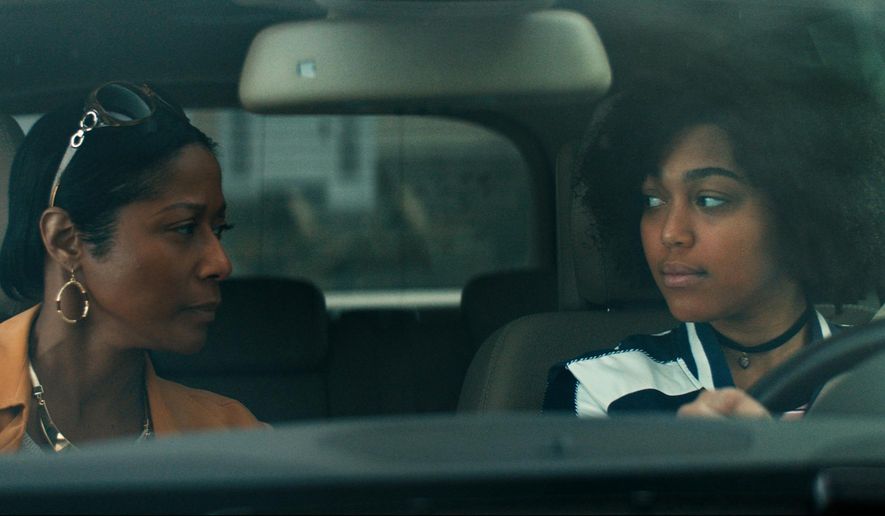It’s a simple message: Beware of racism in the United States.
But Procter & Gamble took a calculated risk with its ad that features black mothers speaking to children about racial bias through the decades. The company says it knew there might be a backlash - and the ad has been criticized as being anti-police or anti-white. But it says it felt after hearing from consumers that the ad would be worth it.
“The Talk,” which makes no mention of any P&G product, has been the talk of social media.
The ad is part of a shift by some corporations that are making emotional appeals to consumers by treading into territory that could be polarizing. But experts say there are likely to be more of these ads, as companies seek younger customers who respond to them.
“Brands just can’t push their messages out there,” said Luis Garcia, president and lead strategist of MarketVision, a San Antonio, Texas-based marketing firm. “They have to create meaningful ways that are going to engage people.”
Consumers have so many choices among so many brands, Garcia said, that people remember only what matters to them.
In the P&G video released online last month, a mom in the 1950s tells her daughter she is not just “pretty for a black girl,” as someone told the girl, but “beautiful, period.” And a mom in the 1960s tells her son he may hear an epithet, but not to let it hurt him. Another mom, this time in the 1990s, reminds her son to take his identification with him as he sets off for practice.
None of the company’s products, like Pampers diapers, Tide detergent or Crest toothpaste, are shown. Instead, after clips of mothers giving children “the talk,” the video invites people to discuss it online with the hashtag #TalkAboutBias.
The ad is scheduled to begin airing on national television next week.
Damon Jones, a spokesman for Cincinnati-based Procter & Gamble, said not including products in “The Talk” was a conscious decision because the company wanted viewers to focus on its message. Ads for P&G products often feature smiling babies wearing its diapers or highlight dishes that sparkle after using its soap.
“There’s a time for product placement,” Jones said. “There’s a time to do something broader.”
Jones said the company believed now was the time to tackle racial bias after hearing feedback from consumers. He said “The Talk” ad seemed like an evolution from other socially conscious Procter & Gamble efforts, and cited its #LikeAGirl campaign that criticized emojis for being “stereotypical” and “limiting” toward women.
Procter & Gamble isn’t the first company to try to tackle difficult topics. Some brands are specifically known for taking positions on political or social issues. Other big brands have tried it too. Earlier this year, Nike unveiled its “Equality Has No Boundaries” commercial featuring well-known athletes. And Anheuser-Busch released a Super Bowl ad that focused on its founder’s immigrant past.
Such ads often draw criticism, not only from those who oppose the social message but also sometimes from people it’s trying to appeal to.
Pepsi was reproached early this year over a video that took images from Black Lives Matter protests and ended with Kendall Jenner, a white woman, giving a police officer a can of Pepsi. Critics said the commercial trivialized the issue of black residents’ interaction with police.
And two years ago, Starbucks launched a “Race Together” campaign aimed at getting customers to talk about race, only to end it shortly after critics claimed it was poorly executed and a marketing ploy.
The P&G ad has drawn positive and negative reactions.
Jennifer Johnson of Detroit said the conversations portrayed in the ads are rooted in real life. She says she’s had similar talks with her now-adult daughter over the years.
“She liked to go out and I would tell her to be careful,” said Johnson, 55, who is black. “She would say ’alright, ma. I got you.’”
Johnson also believes that the ad, although illustrating black experiences, is meant for all audiences and that it may steer more business toward P&G products.
Victor Taylor, a black 63-year-old retiree in Bakersfield, California, called the ad “reality.”
“That’s what (black) children go through every day,” Taylor said about being treated differently. “I don’t find the ad prejudiced. I found it informing to the children growing up.”
Still, the ad didn’t make him want to go out and buy Crest or Tide, Taylor added.
Some social media users saw the ad as stroking racial animosity. Conservative columnist Michelle Malkin said it amounted to “identity-politics pandering” and alienated law enforcement.
“P&G should stand for quality consumer goods, not empty Protest & Grumble that divides more than it unites,” Malkin wrote.
Robert Passikoff, president of the customer research firm Brand Keys Inc. in New York, said that’s the risk Procter & Gamble took and wondered how shareholders, even those who agree with the ad’s message, might respond. P&G is currently resisting activist investor Nelson Peltz, who is seeking faster changes and better financial results from the consumer products company.
“I’m the last of the Mad Men era,” Passikoff said. “I believe companies are not there for social change. They are there to sell products.”
But Benjamin Bates, a professor of health communication at Ohio University’s Scripps College of Communication, said he believed the reward outweighed the risk since the ad appealed to African-Americans, and younger consumers who are more comfortable with diversity.
“The people the ad would alienate are a small percentage,” Bates said. “I, as a CEO, would probably think, ’If I lose some racists because of this, I’m OK with that’.”
Jones said the company is exploring more campaigns that tackle difficult issues about gender, racial and equality.
___
Russell Contreras and Corey Williams are members of The Associated Press’ race and ethnicity team. Follow Russell Contreras on Twitter at https://twitter.com/russcontreras




Please read our comment policy before commenting.